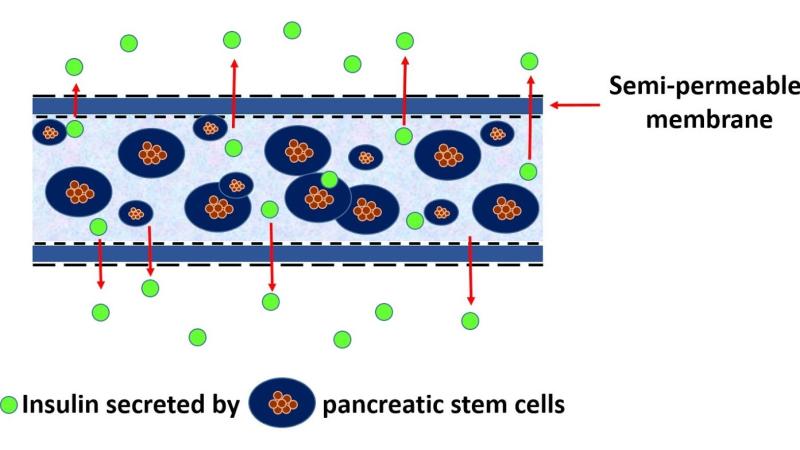
India is infamously called the ‘diabetes capital of the world’. With over 40 million diabetics in the country, we have a distinction of having the highest number of diabetics for any country. This has huge implications on the country’s healthcare, forcing doctors, scientists and citizens to work together to manage and remediate this condition. Now, researchers at the Indian Institute of Technology Bombay (IIT Bombay) have some sweet news for diabetics. They have developed a polymer based bioartificial pancreas that can be implanted inside the body, thus helping in managing diabetes.
Diabetes mellitus is a chronic metabolic disorder in which sugar levels in the blood are very high for a prolonged period. In a healthy person, the body breaks up the carbohydrates in the food, into glucose, which supplies energy. This is done with the help of a hormone called insulin, produced in the pancreas. However, in a diabetic, the body either does not make enough insulin (Type 1 diabetes), or cannot use the insulin it produces (Type 2 diabetes). In some cases, it could be a combination of both.
To treat Type 1 diabetes, a condition affecting three out of 100,000 children of 0–14 years, doctors recommend the use of insulin injections, insulin pumps, or transplantation of either the whole pancreas or islet cells — part of the pancreas that produces insulin. Recently, there has been considerable progress in developing bioartificial pancreas with islet cells which mimic the function of a natural pancreas. However, a persistent roadblock has been the issue of biocompatibility — the body treats the bioartificial pancreas as a ‘foreign’ object, triggering the immune system’s response, which can degrade the function of the artificial pancreas.
In this study, the researchers have developed a bioartificial pancreas using polymer based hollow fibre membrane that is biocompatible and can also grow and sustain insulin producing cells on it. “A hollow fibre membrane is a narrow tube about 1 mm in diameter with pores in the wall ”, explains Prof. Jayesh Bellare from IIT Bombay, who led the study. “When liquid is passed through the tube (also called lumen), the wall selectively retains certain constituents and allows others to pass through”, he says, adding that this sort of ‘selective separation’ is used in many processes, including dialysis.
The researchers made these patented hollow fibre membranes using a polymer called polysulfone, which is known for its toughness and stability, with an additive compound called TPGS (d-α-Tocopheryl polyethylene glycol 1000 succinate). “The advantage of our hollow fibre membrane is that it supports the cells to grow by mimicking the extracellular matrix in which the cells naturally grow, and simultaneously, allows insulin to reach the patient while preventing an immune reaction from cells if they are of foreign origin”, remarks Prof. Bellare.
The inner side of the hollow fibre membranes developed by the researchers has pores in the nanometer range and is responsible for the selective separation of insulin. The rest of the membrane is more porous and has bigger pores which provide support. The researchers made the bio-artificial pancreas by placing together one or more hollow fibres to form a small bioreactor — a container-like structure where insulin is produced.
The researchers have tested their device with both human stem cells derived from umbilical cord, as well as islet cells from pig pancreas. “For the first time ever, we have successfully encapsulated human stem cells and porcine cells in our novel and patented material derived hollow fibre membrane”, says Prof. Bellare. The researchers then implanted these devices into diabetic mice for 30 days and found that these implants caused no abnormalities to other organs. In addition, the immune cells of the mice did not attack the implants, and blood vessels were also seen growing on the cells of the implants.
The research could improve the quality of life for more than 542,000 children in the world living with Type 1 diabetes. So how far are we from seeing this bioartificial pancreas in action? “Although there is a long way to go for making islet transplantation a cure for diabetes, but with the right material and cell type, this can become a reality”, says Prof. Bellare. As a next step, the researchers plan to continue studying the how the new device behaves in large animals. “Much more will be needed to bring this in human trial; the basic technology has been demonstrated in our work”, he concludes.





